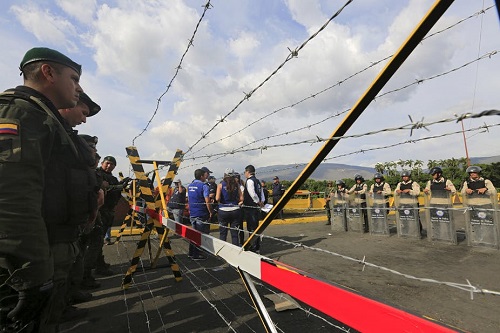Reuters photo
By
Ricardo Swire
The Colombia/Venezuela border is the epicentre of Latin America’s criminality, the area sheltering a plethora of underground economies generated by sophisticated transnational criminal groups. Colombian anti-narcotic police regard the Catatumbo border region in Norte de Santander, Colombia as the cheapest place to produce cocaine universally. Gasoline is the main precursor chemical used to process cocaine, therefore Venezuela’s subsidies guarantee producers low fuel prices.
Venezuela’s downward economic spiral introduced a cheap criminal labour force utilized by Colombian cocaine producers to harvest, process and transport cocaine consignments. Such special migrants, readily available along the Venezuelan frontier, are paid less than Colombian equals. Colombian cocaine usually crosses the border to enter Venezuela via three main routes, the most popular being straight across from Catatumbo’s production facilities to Táchira and Zulia states in Venezuela.
Alternatively traffickers cross Colombia’s eastern plains and disappear among the state of Apure’s residents. Another choice is along the rivers, aka “superhighways of the southern jungles,” to the state of Amazonas in Venezuela. Records showed more than four hundred metric tons of cocaine makes the border crossing annually. In Venezuela a kilo of cocaine is valued US$4,000, traffickers earn approximately US$1.6 billion.
Paramilitary group the ELN controls fuel supplies traversing in the opposite direction to Colombia. On the Venezuela/Colombia border black-market petrol sells for US$2.50 per litre. In Venezuela a similar quantity costs bolivars 170,000. National security officials possess photographic proof that captured hundreds of illegal fuel barrels, moving from Apure in Venezuela to Arauca in Colombia, with rogue Venezuela National Guard soldiers as security detail. Colombia/Venezuela national air corridors are also subjugated.
US Drug Enforcement Administration (DEA) reports about a Colombian middle-aged male trafficker from Cali, who relocated to Apure Venezuela, explained the severity of aerial security breaches. The “Linares Network” member coordinated narco planes that ascended from Apure, flew due north towards the Dominican Republic and turned left along the Fifteenth Parallel. Both single and twin-engine planes, each transporting a maximum eight hundred kilos of cocaine per flight, entered Central American stratosphere using the Honduras/Nicaragua aerial border to avoid Colombian radar detection.
Ricardo Swire
Ricardo Swire is the Principal Consultant at R-L-H Security Consultants & Business Support Services and writes on a number of important issues.



No Comments Yet!
You can be first to comment this post!